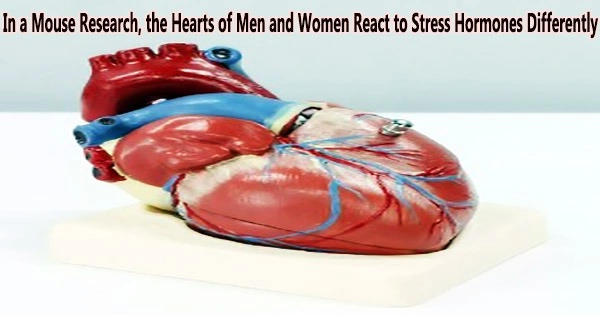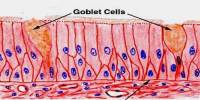According to a recent study appearing in Science Advances, the stress hormone noradrenaline affects the hearts of men and women differently. The research on mice may have consequences for how different sexes react to drugs as well as human heart conditions like arrhythmias and heart failure.
The group created a novel kind of fluorescence imaging technology that enables them to utilize light to observe the real-time responses of the mouse heart to hormones and neurotransmitters. Noradrenaline, also known as norepinephrine, was administered to the mice. Both a neurotransmitter and a hormone, noradrenaline is connected to the body’s “fight or flight” response.
The findings show that after being exposed to noradrenaline, the hearts of male and female mouse respond initially in the same way. The electrical activity of the heart varies depending on gender, with some parts of the female heart returning to normal sooner than others.
“The differences in electrical activity that we observed are called repolarization in the female hearts. Repolarization refers to how the heart resets between each heartbeat and is closely linked to some types of arrhythmias,” said Jessica L. Caldwell, first author of the study. Caldwell is a postdoctoral scholar in the UC Davis School of Medicine Department of Pharmacology.
“We know that there are sex differences in the risk for certain types of arrhythmias. The study reveals a new factor that may contribute to different arrhythmia susceptibility between men and women,” Caldwell said.
Heart disease is the leading cause of death in the US
Heart disease is the leading cause of death for both men and women in the United States. It accounted for about 1 in every 4 male deaths and 1 in every 5 female deaths in 2020. Although both sexes are affected, most cardiology research has been done on male individuals.
The purpose of this study was to examine potential contributing factors to arrhythmias. Heart conditions known as arrhythmias occur when the electrical impulses that regulate heartbeats don’t work properly. They affect somewhere between 1.5% to 5% of the population.
The differences in electrical activity that we observed are called repolarization in the female hearts. Repolarization refers to how the heart resets between each heartbeat and is closely linked to some types of arrhythmias. We know that there are sex differences in the risk for certain types of arrhythmias. The study reveals a new factor that may contribute to different arrhythmia susceptibility between men and women.
Jessica L. Caldwell
Methods
A mouse known as the CAMPER mouse, which has been genetically altered to emit light during a very particular chemical event in the heart termed cAMP binding, is used in the unique imaging method.
The cAMP molecule (an abbreviation of cyclic adenosine 3′,5;-monophosphate) is an intermediate messenger that turns signals from hormones and neurotransmitters, including noradrenaline, into action from heart cells.
A biosensor using fluorescence resonance energy transfer (FRET) carries the light signals from the CAMPER mouse. A novel imaging technology specifically created for hearts can detect this FRET signal with high speed and great resolution. This enables the researchers to capture variations in electrical activity as well as the heart’s response to noradrenaline in real time.
With the help of this innovative imaging technique, it was possible to identify the variations in cAMP degradation and electrical activity between male and female mice.
Including female mice leads to discoveries
According to senior author of the study Crystal M. Ripplinger, the researchers did not intend to examine sex-based reactions. However, as they began to notice a pattern in the various responses, the researchers came to the conclusion that the disparities were dependent on sex.
Professor Ripplinger is a biomedical and electrical engineer who works in the department of pharmacology.
She only ever employed male animals when she first established her lab at the UC Davis School of Medicine more than ten years ago. At the time, most research followed a similar pattern. But several years ago, she began including male and female animals in her studies.
“Sometimes the data between the two sexes is the same. But if the data start to show variation, the first thing we do is look at sex differences. Using both male and female mice has revealed clues into differences we would never have suspected. Researchers are realizing you can’t extrapolate to both sexes from only studying one,” Ripplinger said.
She notes that with the current study, it’s not clear what the differences in cAMP and electrical activity may mean.
“The response in the female mice may be protective or it may not. But simply documenting that there is a measurable difference in the response to a stress hormone is significant. We are hoping to learn more in future studies,” Ripplinger said.
Additional authors on the study include I-Ju (Eric) Lee, Lena Ngo, Lianguo Wang, Donald M. Bers, Manuel F. Navedo and Julie Bossuyt from UC Davis; Sherif Bahriz from UC Davis and Mansoura University; Bing (Rita) Xu and Yang K. Xiang from UC Davis and VA Northern California.
















